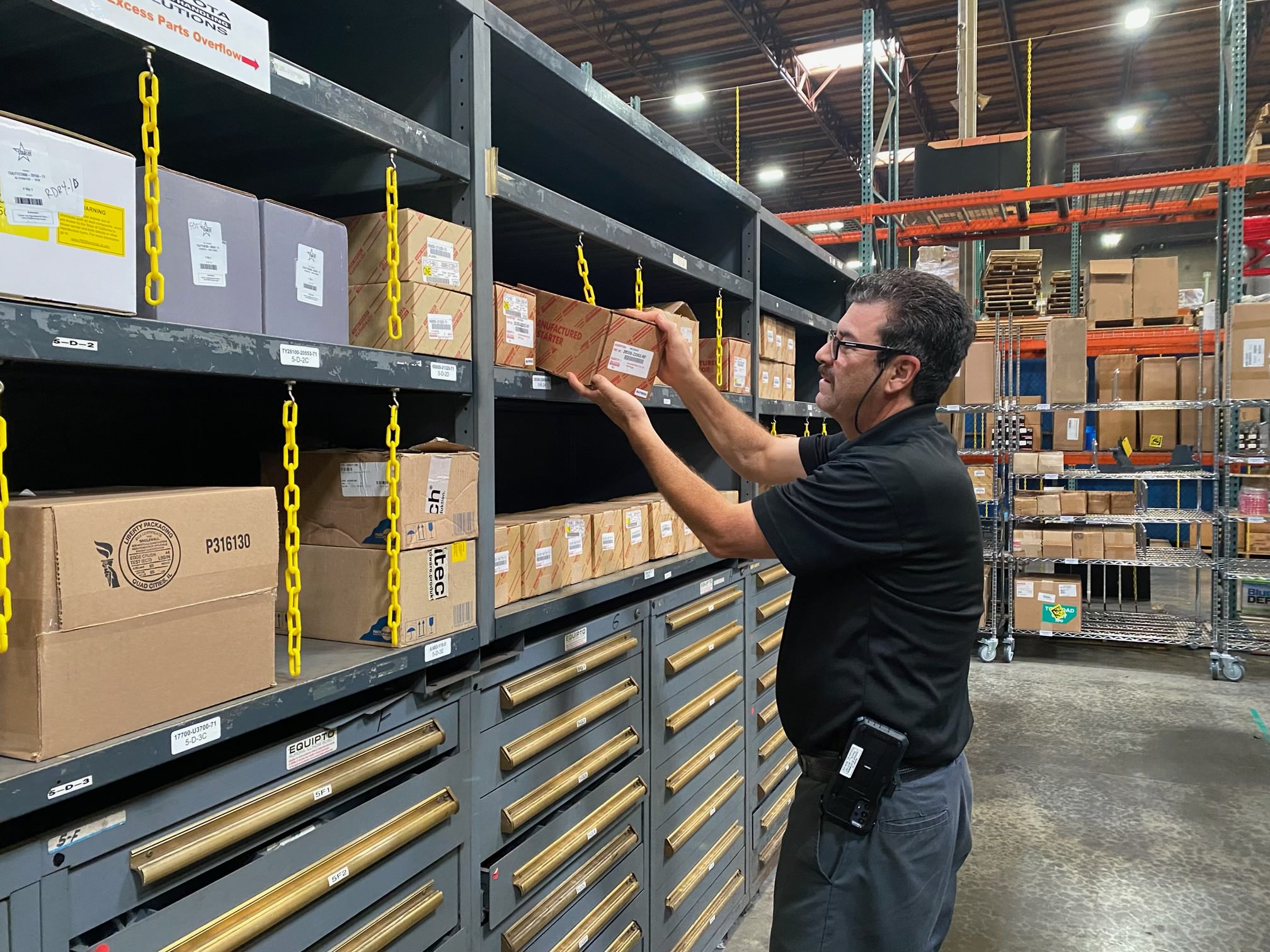Effective forklift maintenance is indispensable for any business relying on material handling equipment. The key to reducing downtime and ensuring smooth operations is strategically managing critical spare parts within your facility. This blog post explores the importance of keeping essential forklift components on-site, enabling businesses to address issues, minimize disruptions, and enhance efficiency.
The Cost of Downtime
Unplanned downtime can be a significant financial burden for businesses, affecting productivity, customer satisfaction, and the bottom line. When a forklift malfunctions, every minute counts, and delays in sourcing replacement parts can escalate costs and disrupt workflow.
Identifying Critical Forklift Parts
- Frequent Replacements: Identify the parts you replace most frequently during routine maintenance. Make sure to include components that undergo regular wear and tear in the course of daily operations.
- Urgency of Replacement: Evaluate how often you need specific parts. Critical parts are those whose immediate availability is essential to avoid prolonged downtime.
- Business Impact: Consider the broader impact on your business if a particular part is unavailable. If the absence of a specific component significantly hampers operations, it qualifies as a critical part.
Benefits of On-Site Spare Parts
- Swift Response: Keeping critical spare parts on-site allows for immediate response to forklift issues. Technicians can quickly access the necessary components, reducing the time needed to get the equipment back in operation.
- Cost Efficiency: By maintaining an inventory of essential parts, businesses can avoid costly overnight shipping charges and emergency procurement expenses. Having parts readily available minimizes the financial impact of unexpected breakdowns.
- Continuous Operations: With on-site spare parts, businesses can maintain continuous operations even when facing forklift malfunctions. The ability to fix a forklift ensures a seamless workflow, preventing disruptions in supply chains and meeting customer expectations.
Developing a Spare Parts Strategy
- Regular Audits: Conduct regular audits of your forklift fleet and update the list of critical spare parts based on usage patterns and equipment specifics.
- Strategic Inventory Management: Implement a robust inventory management system to track the availability and condition of spare parts to help replenish stock proactively.
- Collaboration with Suppliers: Establish relationships with reliable suppliers, like Toyota Material Handling Solutions, to ensure a steady and timely supply of critical parts when needed.
Proactively managing critical spare parts on-site is fundamental to effective forklift maintenance. By investing in a strategic spare parts strategy, businesses can minimize downtime, optimize operational efficiency, and ultimately contribute to a more resilient and profitable operation. Prioritize preparedness today to secure tomorrow’s uninterrupted flow of your material handling processes.
Tags: free resources, parts, productivity
